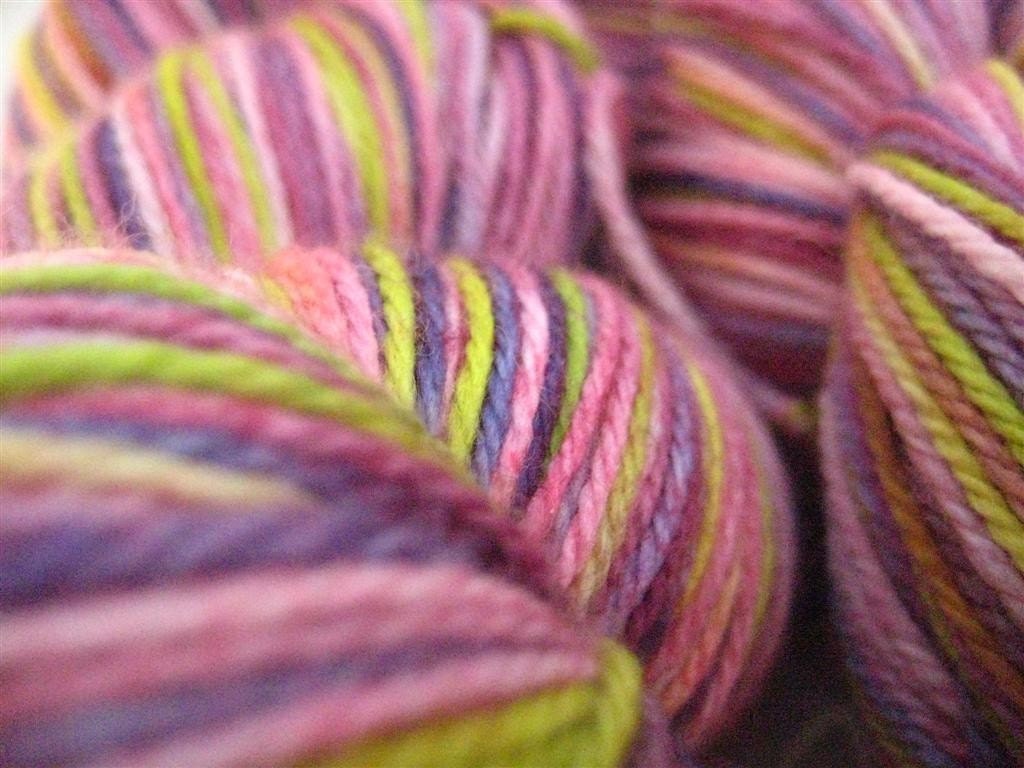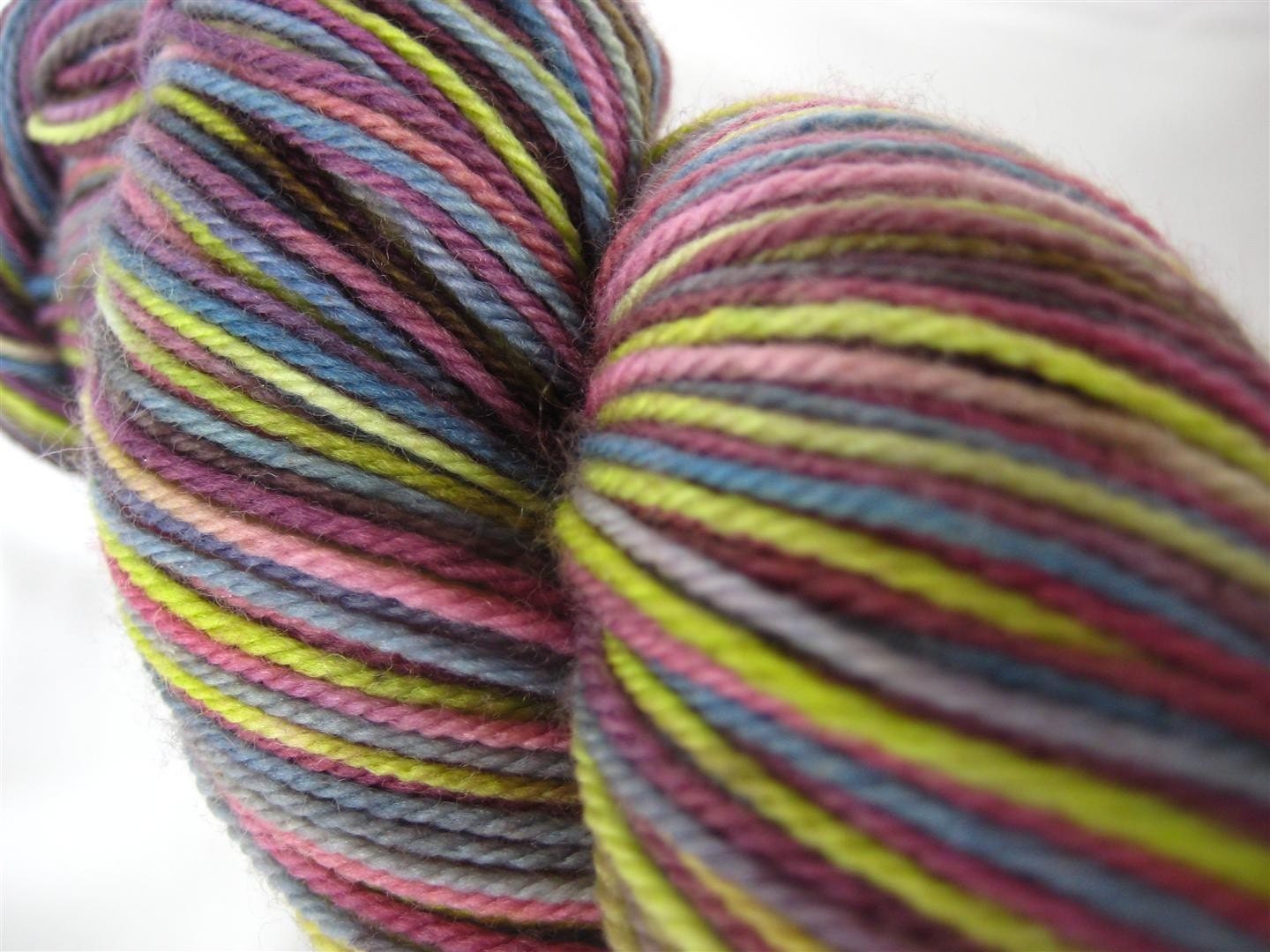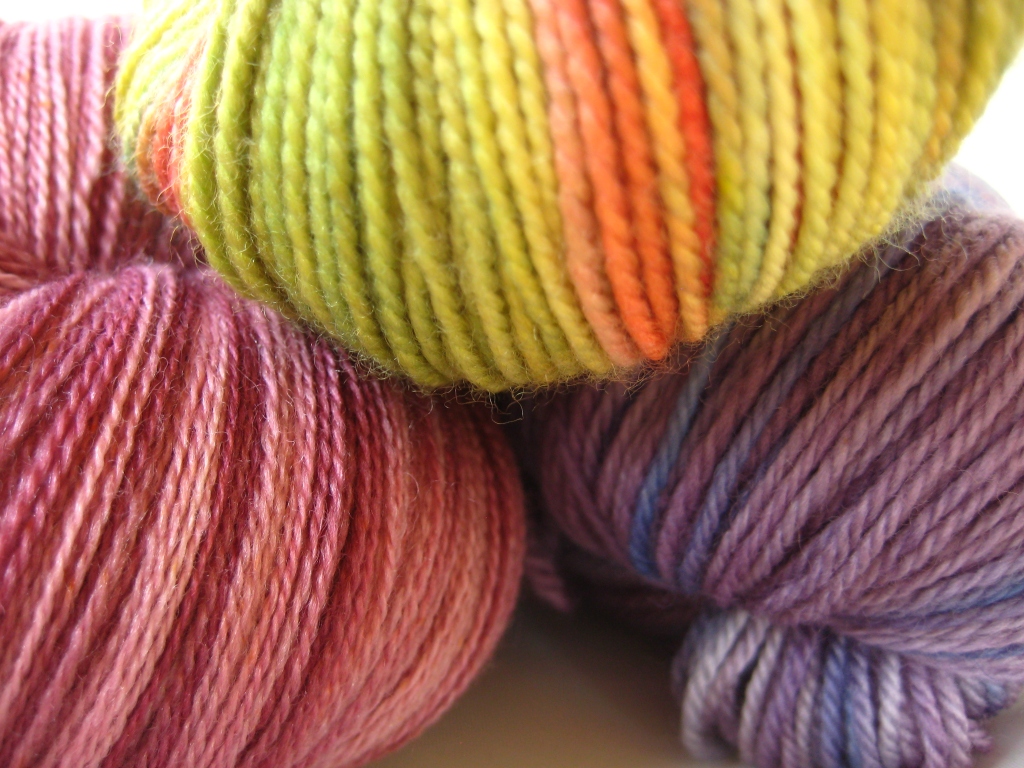In Abigail‘s post last week about Choosing a Knitting Pattern for Hand-Dyed Yarns, she focused on reading the yarn’s colour repeats in order to choose a pattern that would work best with the yarn. Doing this avoids undesirable pooling and flashing, and brings out the best in the unique colour changes in each hand-dyed yarn.
But there are a few other things to take into consideration when choosing a pattern for a hand-dyed yarn, and one of the most important is the type of colour changes the yarn contains. Whether a yarn is dyed in gently undulating shades of the same hue or with wild changes from one colour to another makes a big difference to the type of pattern that will suit it. And understanding thise difference will help you choose a stitch that will really show off both the pattern and the yarn.
Hand-dyed yarns can be generally put into three categories. I tend to call them “Semi-Solids”, “Gently Variegated”, and “Wildly Variegated”. Carol J. Sulcoski, in her wonderful book Knitting Socks with Handpainted Yarns, calls them “Nearly Solids”, “Muted Multis”, and “Wild Multis”. Either way, the distinctions are the same.
Semi-solids gently move through different shades of a single colour. The transitions from lighter to darker are usually subtle and gradual, giving the colour more life than if it had been dyed in a single shade. Because the colour changes in semi-solids aren’t very attention-seeking, they don’t draw the eye away from intricate stitch work. And for that reason, semi-solid yarns are a wonderful choice for complicated patterns and delicate lace work. Examples of semi-solids are SpaceCadet’s Luna Laceweight in Sage and in Plum Wine.

.

.
Gently Variegated yarns contain more than one colour but the overall effect is still subtle and gentle. The colours are all closely related in either hue or value, so the changes don’t pop out too much. Gently Variegated yarns can be used for textured stitchwork, but they work best where the patterns are simpler so the colour changes don’t compete with the stitches. The kind of intricate patterns that work so beautifully with Semi-solids would be overwhelmed by Gently Variegate yarns, but choosing a simpler pattern lets their colours sing. SpaceCadet’s Celeste yarn in Spiceberry and Astrid DK yarn in Red Brick are good examples of Gently Variegated yarns.

.

.
And finally, there are Wildly Variegated yarns. These are the yarns that grab everyone’s eye, the ones that seem to jump right out of the yarn basket and yell, “Look at meeee!” They contain multiple colours, of wildly differing hues and values, and their colour changes are distinct and eye-catching. With colour as commanding as that, the key is to choose a knitting pattern that will make the colours the feature, and not compete with them. So, with Wildly Variegated yarns, the best patterns use simple stitches that really let the yarn show itself off. Good examples of Wildly Variegated yarns are SpaceCadet’s Celeste yarn in Garden in Spring and in NightDive.

.

.
So, there we have it. Three categories of hand-dyed yarns — Semi-Solid, Gently Variegated, and Wildly Variegated — and one simple rule: with wild colour changes, go for simpler stitchwork and, conversely, when the colour changes are gentler, the yarn can handle more complicated pattern work. Just keeping that in mind when you match your yarns to patterns will help ensure you end up with finished objects in which both your yarn and your stitches shine.


Lots of links are broken.
Thanks for a very informative post!!